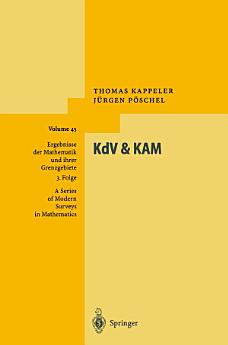KdV & KAM
এই ই-বুকের বিষয়ে
Viewing the KdV equation as an infinite dimensional, and in fact integrable Hamiltonian system, we first construct action-angle coordinates which turn out to be globally defined. They make evident that all solutions of the periodic KdV equation are periodic, quasi-periodic or almost-periodic in time. Also, their construction leads to some new results along the way.
Subsequently, these coordinates allow us to apply a general KAM theorem for a class of integrable Hamiltonian pde's, proving that large families of periodic and quasi-periodic solutions persist under sufficiently small Hamiltonian perturbations.
The pertinent nondegeneracy conditions are verified by calculating the first few Birkhoff normal form terms -- an essentially elementary calculation.





